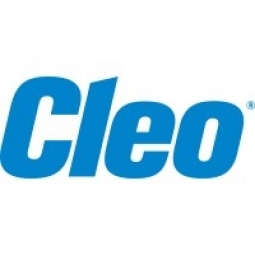公司规模
Large Corporate
地区
- America
国家
- United States
- Canada
产品
- EXTOL Business Integrator
- Woodstream wildlife and pest control systems
- Woodstream lawn and garden products
- Woodstream pet supplies
技术栈
- EDI
- SQL Server
- iSeries Server
实施规模
- Enterprise-wide Deployment
影响指标
- Productivity Improvements
- Cost Savings
- Customer Satisfaction
技术
- 应用基础设施与中间件 - 数据交换与集成
- 分析与建模 - 实时分析
- 功能应用 - 库存管理系统
适用行业
- 消费品
- 零售
适用功能
- 物流运输
- 销售与市场营销
用例
- 供应链可见性(SCV)
- 库存管理
服务
- 系统集成
- 数据科学服务
关于客户
Woodstream 是野生动物和害虫控制系统、草坪和花园产品以及宠物用品的供应商。其品牌包括 Victor Pest、Havahart、SaferBrand、Fi-Shock 和 Perky-Pet,产品线包括陷阱、驱虫剂、诱饵、喂鸟器以及景观和室内植物解决方案。其客户规模各异 - 从沃尔玛、K-Mart、Lowe's 和 Home Depot 等大型零售商和家居装饰巨头,到 Ace、True Value 和 Do-It-Best 等五金连锁店,再到市中心、夫妻店和专卖店。其客户超过 1,000 家,零售网点超过 100,000 个。
挑战
Woodstream 是一家野生动物和害虫控制系统、草坪和花园产品以及宠物用品供应商,其原有 EDI 系统供应商告知其产品将不再受支持。这意味着 Woodstream 必须经历一次完整的转换和平台变更才能使用该供应商支持的解决方案。当团队确定新系统的需求时,他们发现了传统 EDI 以外的需求。他们需要一种自动化的方式来接受和集成电子表格、平面文件和 XML 等格式。他们还明确指出需要 A2A 集成来自动化和同步不同应用程序和平台之间的数据共享,以便更好地报告和改进内部业务流程。
解决方案
Woodstream 决定采用 EXTOL Business Integrator (EBI),因为它提供了比 EDI 更多的功能,并且可以由其现有团队进行管理。EBI 创造了一种方法来加快公司收购期间 IT 所需的大量工作。他们通过同步数据和流程以及公开来自不同系统的数据的能力增强了整个企业的报告功能。他们正在提高其网络订购系统的可用性,并自动集成网站订单和后端应用程序和流程。他们还使用 EXTOL 来管理传统 EDI 以及集成非 EDI 格式(如电子表格、XML 和平面文件)的更复杂的自动化。
运营影响
数量效益

Case Study missing?
Start adding your own!
Register with your work email and create a new case study profile for your business.
相关案例.
.png)
Case Study
Improving Vending Machine Profitability with the Internet of Things (IoT)
The vending industry is undergoing a sea change, taking advantage of new technologies to go beyond just delivering snacks to creating a new retail location. Intelligent vending machines can be found in many public locations as well as company facilities, selling different types of goods and services, including even computer accessories, gold bars, tickets, and office supplies. With increasing sophistication, they may also provide time- and location-based data pertaining to sales, inventory, and customer preferences. But at the end of the day, vending machine operators know greater profitability is driven by higher sales and lower operating costs.

Case Study
Improving Production Line Efficiency with Ethernet Micro RTU Controller
Moxa was asked to provide a connectivity solution for one of the world's leading cosmetics companies. This multinational corporation, with retail presence in 130 countries, 23 global braches, and over 66,000 employees, sought to improve the efficiency of their production process by migrating from manual monitoring to an automatic productivity monitoring system. The production line was being monitored by ABB Real-TPI, a factory information system that offers data collection and analysis to improve plant efficiency. Due to software limitations, the customer needed an OPC server and a corresponding I/O solution to collect data from additional sensor devices for the Real-TPI system. The goal is to enable the factory information system to more thoroughly collect data from every corner of the production line. This will improve its ability to measure Overall Equipment Effectiveness (OEE) and translate into increased production efficiencies. System Requirements • Instant status updates while still consuming minimal bandwidth to relieve strain on limited factory networks • Interoperable with ABB Real-TPI • Small form factor appropriate for deployment where space is scarce • Remote software management and configuration to simplify operations

Case Study
Digital Retail Security Solutions
Sennco wanted to help its retail customers increase sales and profits by developing an innovative alarm system as opposed to conventional connected alarms that are permanently tethered to display products. These traditional security systems were cumbersome and intrusive to the customer shopping experience. Additionally, they provided no useful data or analytics.

Case Study
How Sirqul’s IoT Platform is Crafting Carrefour’s New In-Store Experiences
Carrefour Taiwan’s goal is to be completely digital by end of 2018. Out-dated manual methods for analysis and assumptions limited Carrefour’s ability to change the customer experience and were void of real-time decision-making capabilities. Rather than relying solely on sales data, assumptions, and disparate systems, Carrefour Taiwan’s CEO led an initiative to find a connected IoT solution that could give the team the ability to make real-time changes and more informed decisions. Prior to implementing, Carrefour struggled to address their conversion rates and did not have the proper insights into the customer decision-making process nor how to make an immediate impact without losing customer confidence.









